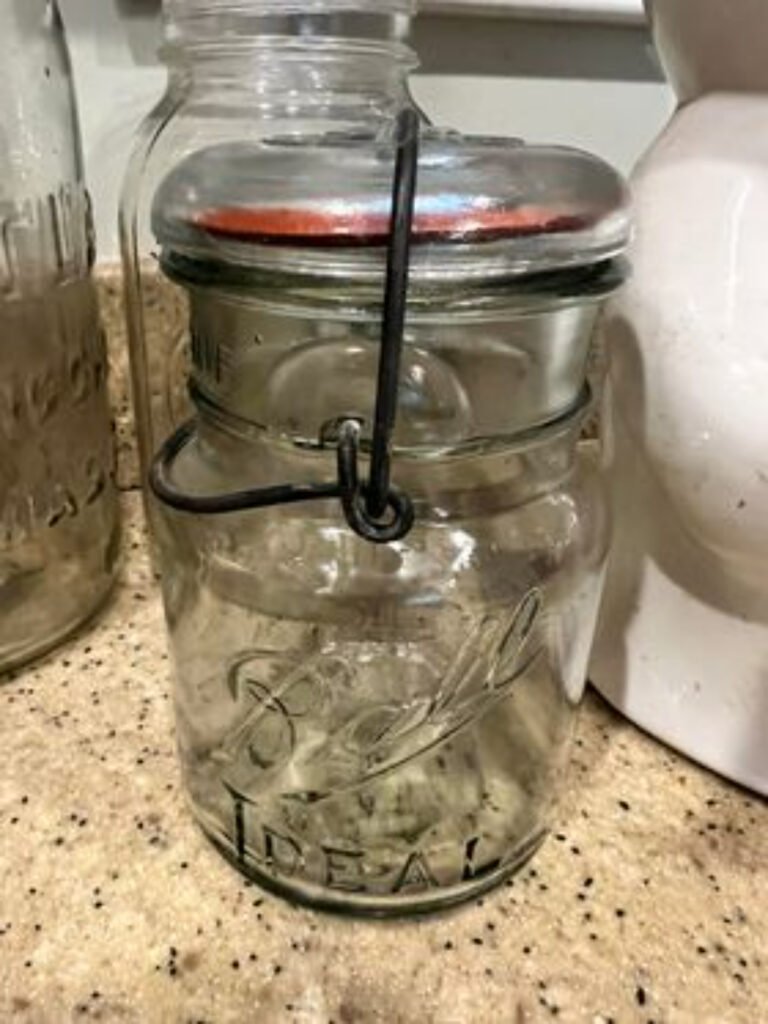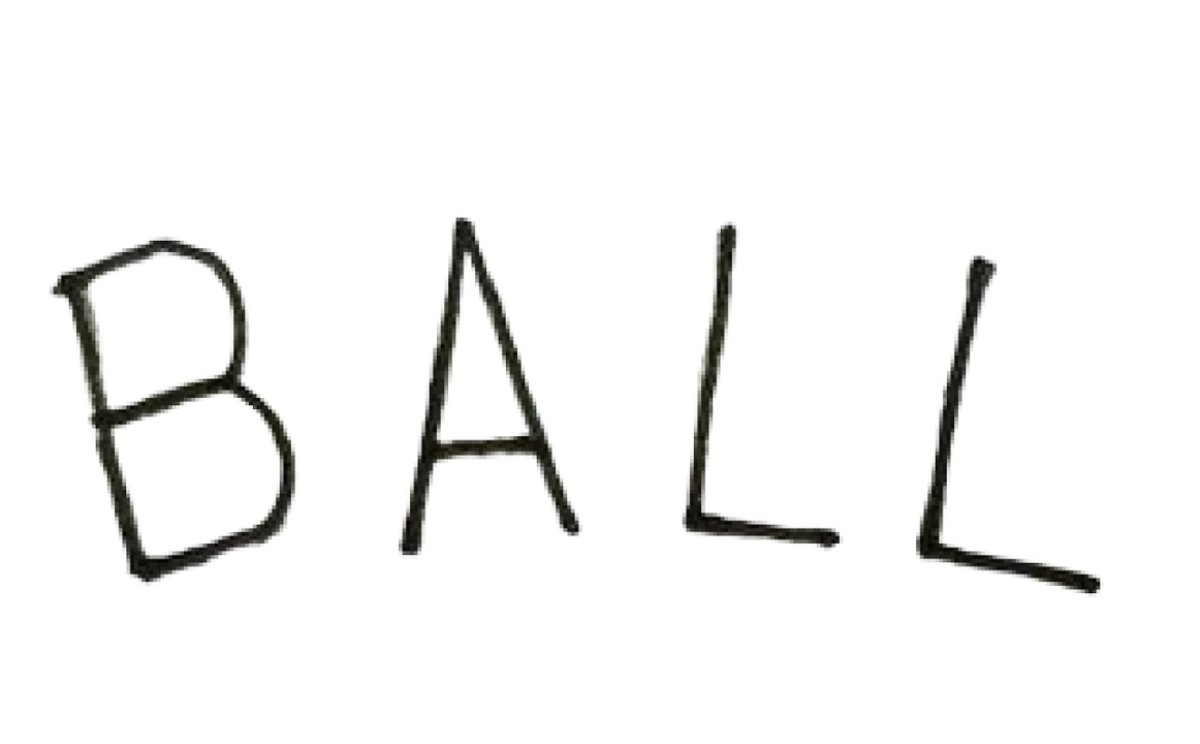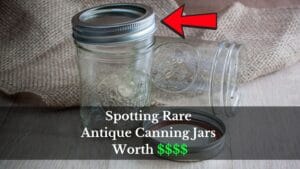Do you have a collection of vintage Ball Mason jars in your kitchen or store room? Well, it’s time you brought them out because, according to recent research, they can be worth as much as a few hundred dollars.
However, identifying and finding the price of old Ball mason jars can be tricky without knowing much about their logo markings, age, designs, and closures.
This Ball jar value guide with a dating chart offers a deep understanding of factors like condition, colors, and rare errors of your vintage Ball jars to assess their true values!
Key Takeaways
- The value of Ball mason glass jars greatly depends on their color, condition, rarity, age, and type.
- If your Ball Mason jar has a rare color, like olive green, amber, or rose-purple (very rare), it’s quite valuable, worth up to $300 or $350!
- You can easily date a vintage Ball Mason Jar based on the unique embossing of the logo on the body.
- Ball Upside Down Mason Jars are one of the rarest and most valuable Ball jars that can fetch over $500, depending on their condition.
Brief History of Ball Mason Jars

When John Mason’s Mason jar patent was about to retire, Ball Brothers Manufacturing Company started making mason jars in 1884, continuing until 1993. During this time, BBMC first became Ball Brothers Company and later Ball Corporation.
The company was founded in Buffalo, New York, in 1880 by Frank C. and Edmund B. Ball. In 1886, it was demolished by fire, but simultaneously, the brothers collaborated to form the new Ball Brothers Manufacturing Company.
The manufacturer started the production of glass jars in 1884 in its iconic aqua “Ball Blue” color. Initially, the jars were hand-made, but after the introduction of the semi-automatic glass-making machine in the late 1890s, they were all machine-made.
The Ball Brothers Company stopped making glass canning jars in 1996 after it sold all its glass manufacturing operations. However, its spin-off, Alltrisia, which later became a separate company named Jarden (Newell Brands), produces licensed Ball jars.
Finding the Value of Ball Mason Jars
The value of common antique Ball mason jars ranges from $15 to $50, while the rare ones can be worth a few hundred dollars, like this Ball Masons patent jar with a keystone lid that sold for $440 on eBay!
So, what made this particular jar so special? Are there any special features that hike the cost? Well, the final value of a Ball jar depends on the following factors:
1. Condition
In most cases, an old Ball jar can be worth a decent amount if it’s in good condition. Defects like cracks, dents, chips, and broken or chipped edges greatly depreciate the value of a Ball mason jar.
Similarly, broken or defective lids, as well as missing lids, can also devalue your jar.
However, do NOT mistake isolated bubbles and different color strikes or swirls as defects! Such manufacturing errors and rarities make the jar more valuable.
If you notice some extra evenly scattered tiny bubbles (not unique & isolated) throughout the jar, it’s likely a reproduction or fake.
2. Color of the Jar
Ball Company started making its first glass jars in aqua color. That’s why most old Ball jars are blue or aqua, which are common and worth less. Generally, aqua Ball jars don’t fetch over $50, even for a large quart or half-gallon size.
But a rare aqua Ball jar with unique features, like visible amber or green swirls or whisps, can be valuable. For example, this aqua Ball Mason jar with a vertical glass seam running through the embossed logo fetched $100!
Besides, vintage green and amber Ball jars are highly sought after, for which collectors can pay up to $300. An amber Ball Perfect Mason jar earned a final bid of $360 on eBay!
I prepared a handy chart to help you understand the Ball mason jar values based on colors:
| Ball Jar Colors | Estimated Value Range |
| Amber | $20 – $100 (common) Up to $300 (rare) |
| Green (Olive Green/Yellow Green) | $50 – $350 |
| Aqua Blue | $2 – $50 (common) $50 or more (rare) |
| Clear Glass | $1 – $30 (common) Up to $90 (rare or large 2-4 gal jars) |
3. Rarities & Errors
You may think of a Ball jar with a misspelled or distinctive name embossing as worthless. But surprisingly, such errors can make it worth hundreds.
Here are a few valuable Ball mason jar errors to look for:
1. Ball Upside Down Jars: Dating back to 1933, Ball Upside Down jars are one of the rarest mason jars with an upside-down “Ball/Mason” embossment. This jar design is extremely hard to find and can easily earn $500 – $600. One Ball upside-down jar was sold for $475 at a Greg Spurgeon Auction.
2. Ball Outlined Marking Jar: This flaw can be identified with the bold outer outline of the “Ball/Mason” embossment, mostly found on the Ball Perfect Mason jars. A unique BPM Quart Jar with outlined embossment was sold for around $330!
3. “Number 13” Jars: Ball mason jars number 13 are uncommon due to a myth of them being unlucky. While I believe these myths are baseless, some collectors think such jars are valuable, not monetarily, though!
4. Misspelled “Perfect” Jars: Some Ball Perfect Mason jars were misprinted with the word “PERFECT” misspelled as “PFRFCT,” “PERFFCT,” “PEREFCT,” or “PFRFECT.” This error glass jar can fetch up to $100 in good condition.
Apart from wrong spellings, you may also find rare Ball glass containers with reversed letters in the markings. For example, a Ball Mason’s Patent jar with a reversed ‘N’ in ‘PATENT’ sold for $236 on eBay!
5. Off Sizes: Apart from standard sizes, pint, half pint, quart, and half gallon, Ball also made some vintage glass jars in off sizes, which can be rare and valuable!
4. Rare Jar Types & Styles

Among the different types of Ball mason jars that Ball Corporation made, some designs are quite rare and, hence, highly prized by collectors.
Below are the most desirable Ball Mason Jar Types and their estimated prices in the market:
1. Ball Buffalo Jar (1885 – 1886)
The Buffalo Jars are the earliest mason jars Ball Company manufactured during 1885 – 1886. It was made in Buffalo, New York, which gives it the name “Buffalo Jars.”
This antique mason jar has a ground lip with screw-top metal band closure and bears the earliest “B,B,G,M,Co” Ball logo. Buffalo jars can be found in aqua and very rarely amber glass.
Estimated Price: A rare pint-size aqua BBGMCo Ball jar sold for $1,250 on eBay, while an amber Buffalo Jar is exhibited at the Virtual Museum of Historical Bottles and Glass.
2. Ball Mason’s Patent Jars (1900s – 1910s)
Ball Brothers Company began making Mason Patent Jars when John L Mason’s patent expired. You can identify this early 1900s jar with the “BALL MASON’S PATENT NOV 38TH 1858” embossment.
Estimated Value: Based on size, Ball Masons Patent jars generally sell for $50 – $100, with some earlier models going as much as $300!
3. Ball Improved Mason Jars (1900s – 1930s)
Ball Improved Jars are some of the early fruit jars that feature a wide mouth and secure screw-thread glass and zinc lids. You may see the following markings on Improved jars:
- “BALL/IMPROVED”
- “BALL/IMPROVED MASON”
- “BALL/MASON IMPROVED”
Estimated Value: Common Ball Improved Mason Jars are worth around $20 – $80. For example, a clear half-gallon Ball Improved antique jar sold for $82 on eBay. Improved models with rare errors can cost $150 – $250.
4. Ball Perfect Mason Jars (1913 – 1922)
Ball Corporation’s most popular canning jars, Perfect Mason Jars, have a distinctive shoulder and screw-thread zinc lid for an airtight seal. These jars display “PERFECT MASON” embossment below the Ball logo.
Estimated Value: Common clear or aqua Ball Perfect Mason Jars are worth around $50 – $150. But rare colors, like amber, green, or purple, can range from $200 to $300 or more. A rare rose purple Ball Perfect Mason Jar earned a high price of $327 on eBay!
5. Ball Ideal Jars (1915 – 1962)
Ball Lightning Jars or Ideal Jars have an airtight seal with a glass lid and wire bail clamp. These jars are also known as ‘Sure Seal Jars’ and ‘Ball Eclipse Jars.’ You can identify these with the “IDEAL” text embossment.
Estimated Value: The value of Ball Lightning or Eclipse Jars ranges from $10 – $30, with a higher price of $60 – $80 for larger 2 or 4-gallon jars.
6. Ball Eclipse Jars (1926 – 1952)
Similar to Ideal Jars, Eclipse jars also have a glass lid with a round rubber gasket and metal bail. But they have a wider mouth. The word “ECLIPSE,” often with “WIDE MOUTH,” is embossed on the jar.
Estimated Value: Ball Eclipse jars generally sell for $5 – $30, depending on the size and lots.
7. Ball Sure Seal Jars (1920s – 1960s)
Sure Seal jars, or Sanitary Sure Seal jars, are another version of Ball lightning jars with wire bail. These jars are available in aqua and clear glass.
Ball also made Sure Seal jars for Towle Maple Products Company, which were not available for home canners. These Towle Ball Jars are highly collectible today!
Estimated Value: While common Ball Sure Seal Jars sell for $10 – $20, the rare blue Towle’s St. Johnsbury Sure Seal jars are worth $100 – $200. One jar sold for $220 on eBay!
8. Ball Special Jars (1910 – 1913)
Manufactured only briefly from the early 1900s to the 1910s, the Special Jars have a screw-thread shoulder seal. You will find the word “SPECIAL” embossed on the front.
Estimated Value: Ball Special Jars are generally available for $5 – $50 online or at flea markets and antique stores.
9. Ball Standard Jars (1900s – 1910)
Standard jars are the early 1910s jars with a fanned-out mouth edge and the old wax-seal closure. These jars have a “STANDARD” mark on the lower body of the jar.
Estimated Value: Though old and rare, Ball Standard jars are worth only around $10 – $40 due to being less functional.
5. Age
Usually, older Ball mason jars manufactured between the 1880s and 1930s are worth more than the newer ones made post-1950s. That’s because the newer jars don’t display craftsmanship and are commonly found.
But remember, with age, other factors like condition, rarity, and size, also impact the final value of an old mason jar.
Easy Ways to Identify and Date Ball Jars
After reading my above statement, many of you would ask ‘how to date a Ball Mason Jar?’ Don’t worry; 40% of my email subscribers asked the same last month!
So, I have curated a list of easy ways to find the age of an old Ball jar!
1. Identify the Ball Logo Embossments
Ball Brothers Company started making mason jars in 1884. But it only started adding the “Ball” logo on the surface (via hand-engraved molds) after 1886.
The earliest Ball jars made prior to that had a unique mark featuring overlapping letters B,B,G,M, & Co (see the original logo in the chart), used from 1885 to 1886. After 1886, Ball Corporation used many different logos in different periods.
I’ve prepared this comprehensive Ball Mason Jar Age Chart using hand-drawn reference marks to help you date a Ball Mason jar easily:
| Ball Logo Variations | Manufacturing Years | Age |
 | 1885 – 1886 | 137 – 138 years |
 | 1895 – 1896 | 127 – 128 years |
 | 1895 – 1896 | 127 – 128 years |
 | 1900 – 1910 | 113 – 123 years |
 | 1910 – 1923 | 100 – 123 years |
 | 1923 – 1933 | 90 – 100 years |
 | 1933 – 1962 | 60 – 90 years |
 | 1960 – 1975 | 45 – 60 years |
 | 1975 – Present | 48 – newer |
2. Mold Number & Letters on the Bottom

Apart from the logo on the body, some antique Ball jars were also marked or embossed with numbers. These number markings at the jar’s bottoms are mold numbers.
Older Ball Mason Jars are often marked with mold numbers 0 to 15. And in some cases, you can also find the letter ‘A’ or ‘C’ with the number. But remember, this mold number doesn’t indicate the manufacturing date or year.
Similarly, the patent dates “1908” and “1858” (Mason’s patent date) embossed on many Ball jars do not indicate their manufacturing years. A Ball jar made in the 1920s can also have a “1908” mark, so don’t use this number code to date the jar.
3. Ball Jar Shape
Ball jars are mostly found in either round or square shapes. Among these, most authentic Ball square mason jars, including the “SQUARE” jars, belong to the post-1920s era.
Although a few square Ball jars from the late 1910s can also be found, the late 1880s and early 1900s jars were primarily round (cylindrical) in shape.
Are Kerr And Ball Mason Jars the Same?
Kerr Mason Jars are an entirely different brand of jars than Ball Mason Jars, both of which are sold by Newell Brands. This company acquired Ball Corporation’s subsidiary, Alltrista, after it became a new company, Jarden, in 2002.
Canning jars are like lucky charms for collectors, but only if they’re rare and old and hold some worth. I hope this guide answers all your questions regarding Ball Mason Jar values, age, and identification marks.
Check out our antique canning jar identification and Atlas Mason jar value guide for further information on glass canning jars!
Note: This article is intended for informational, educational, and entertainment purposes only. Some images are illustrative and may not represent actual brands, products, or related entities. All trademarks, product names, brand logos, packaging, and other intellectual property referenced remain the exclusive property of their respective owners. Any brand mentions or references are provided solely for descriptive and educational context and do not imply any formal or commercial association.










